By Rick VanSickle
Prince Edward County has always been a paradox, a tiny wine collective that farms grapes at great cost in an inhospitable climate yet, more often than not, delivers magical results.
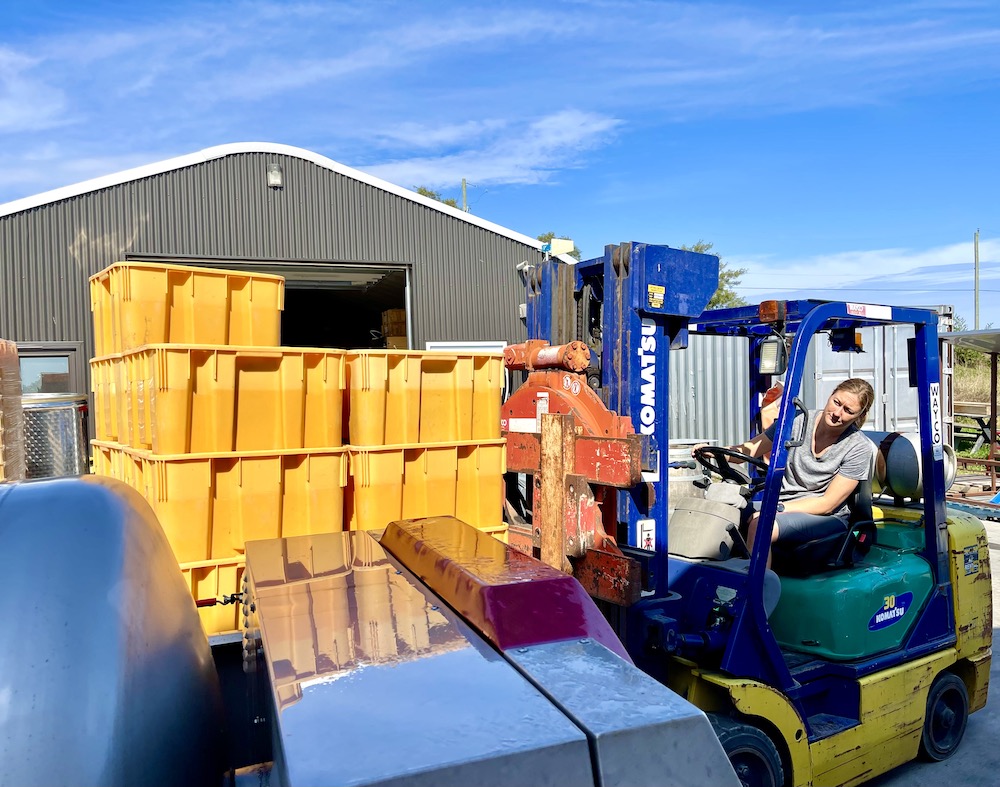
Chasing that magic in the form of soulful wines such as Pinot Noir and Chardonnay is just too big a draw for adventurous vignerons who call the bucolic wine region of Prince Edward County home. The work is hard, the climate can be cruel and vineyards, what little there are compared to Niagara, need a lot of love to keep them from freezing to death each winter. It’s not about the glitz and glamour in The County, there is little of that, it’s about bare-knuckle farming on the edges, passion, and a living that’s as honest and rewarding as it can be difficult.
Wines in Niagara spent a few days in The County last week touring, tasting, and soaking up the homespun vibe. In the first part of our look at the region, which can be viewed here, we spent a pleasant afternoon at one of The County’s newest wineries, Last House Vineyards, and provided some dog-friendly hot spots for noshing and sipping we encountered. In Part II, we visit Trial Estate Winery, got our wires crossed at Rosehall Run Vineyards, speed tasted at Lighthall Vineyards and, of course, visited a good friend of ours at the County Cider Company. Here is our report on Part II of The County.
Trail Estate continues the revolution
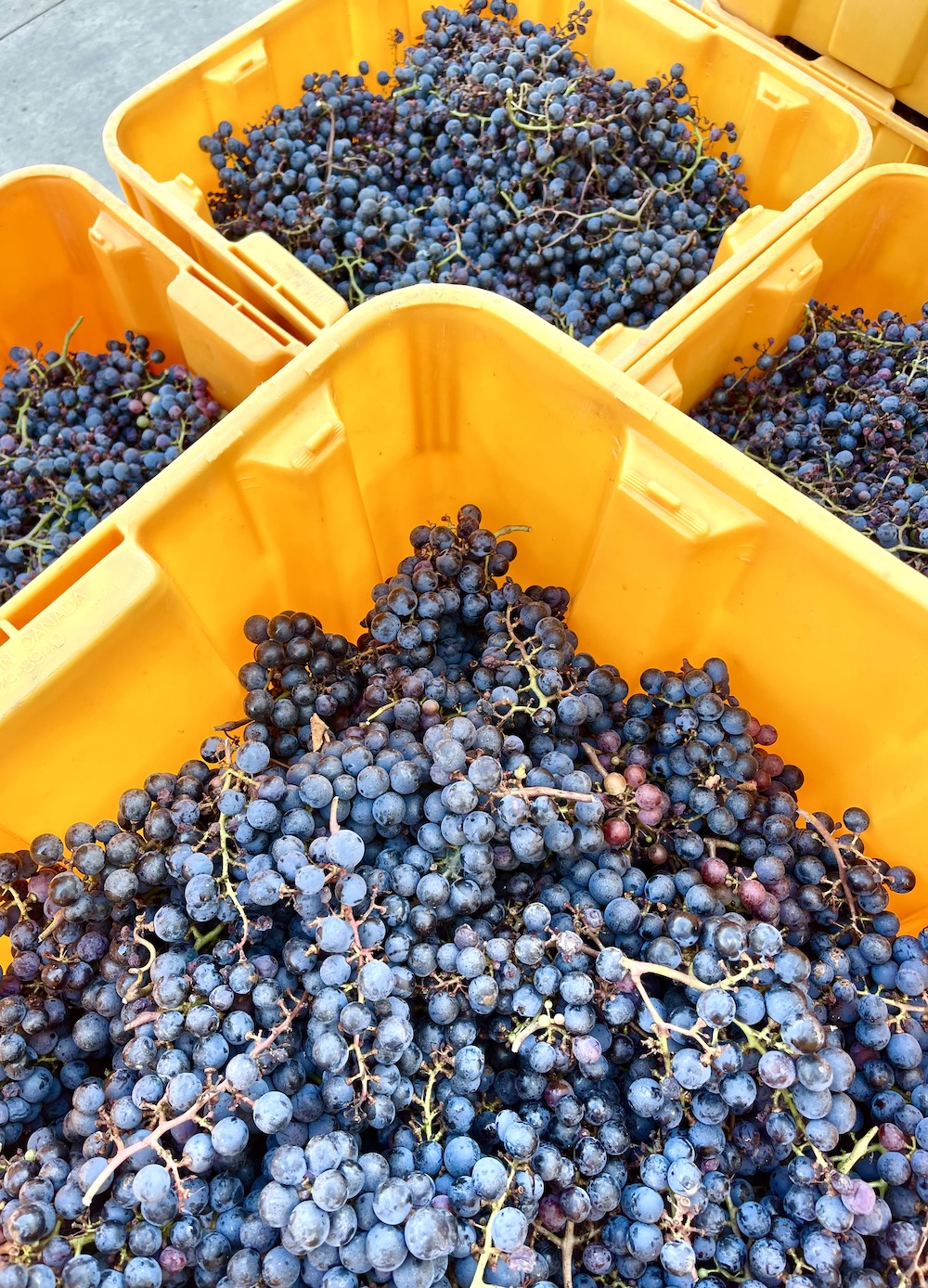
After missing an opportunity to taste with Dan Sullivan at Rosehall Run due to some miscommunications on our part, it was on to Trail Estate where one of the most eclectic portfolios of wines in Ontario is crafted by winemaker Mackenzie Brisbois.
At Trail, boundaries are pushed to the limit and that has culminated into one of the broadest collections of orange wines, skin-fermented whites, pét-nats, piquettes, frizzantes, and everything else that lives on the edge of natural winemaking, which has found a loyal following with the more open-minded and adventurous wine lovers out there. With wine names like Neon Candy, Juicy Red, Little Fluffy Clouds, and Oh Julius, how can you resist tasting these wines? If there is a pioneer of this style of wine in Ontario, Brisbois is it.
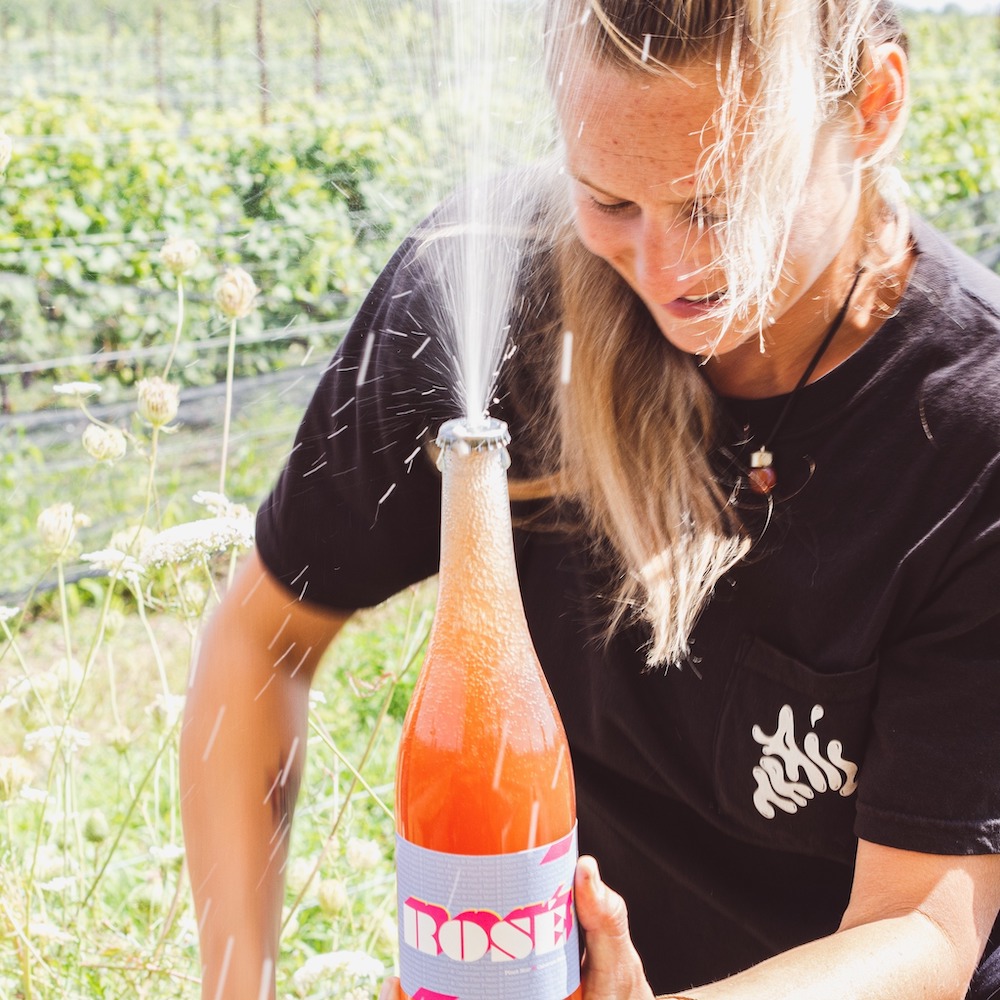
The small but mighty winery has used low-intervention practices in the vineyard and cellar and since 2018 and employs primarily organic and regenerative practices to build soil health and aid biodiversity. Grapes are hand-picked and hand processed. In the cellar, wild, non-select yeasts are used in fermentation with as little intervention as they can get away with. Trail does not use ‘corrections’ such as enzymes, tannins, or colours. If any sulphur is used, it’s minimal to zero. All the wines across the entire portfolio are bottled unfiltered to showcase the vineyard and vintage with as much integrity and honesty as possible.
Brisbois works first and foremost with fruit from the estate vineyard but is not afraid to source key vineyards with trusted growers in Niagara to expand the portfolio. The estate vineyard comprises 6.5 acres with two acres each of Chardonnay and Pinot Noir, one acre of Baco Noir, with the balance consisting of Riesling, Cabernet Franc, Geisenheim and Gewürztraminer. The site is composed of clay-like soil above many layers of calcareous limestone. The North block has shallower soils (less than 12 inches) and heavier clay soils. The South block has marginally deeper, more gravelly soils. In summer, it often gets drought-like conditions stressing the vines.
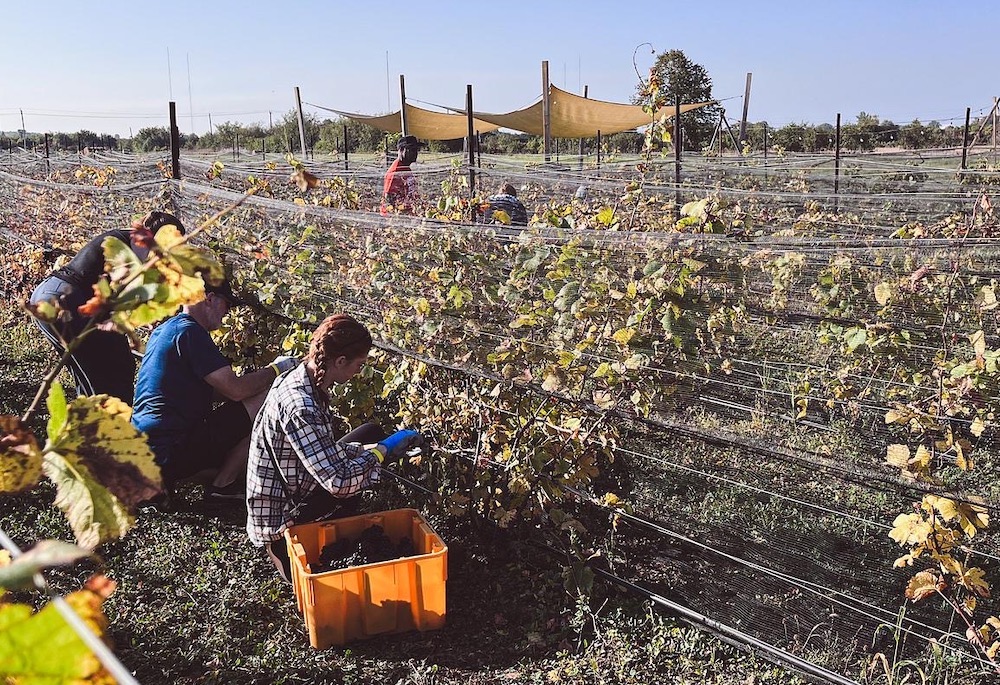
On the day we visited last week, Brisbois was bringing in some fresh-picked estate Cabernet Franc to the crush pad. Like a lot of winemakers we spoke to on our trip, the Trail winemaker is excited by the fruit coming in with harvest 2023. Yields are slightly down but the quality is way up as a warm September balanced out and negated a wetter mid-season than normal.
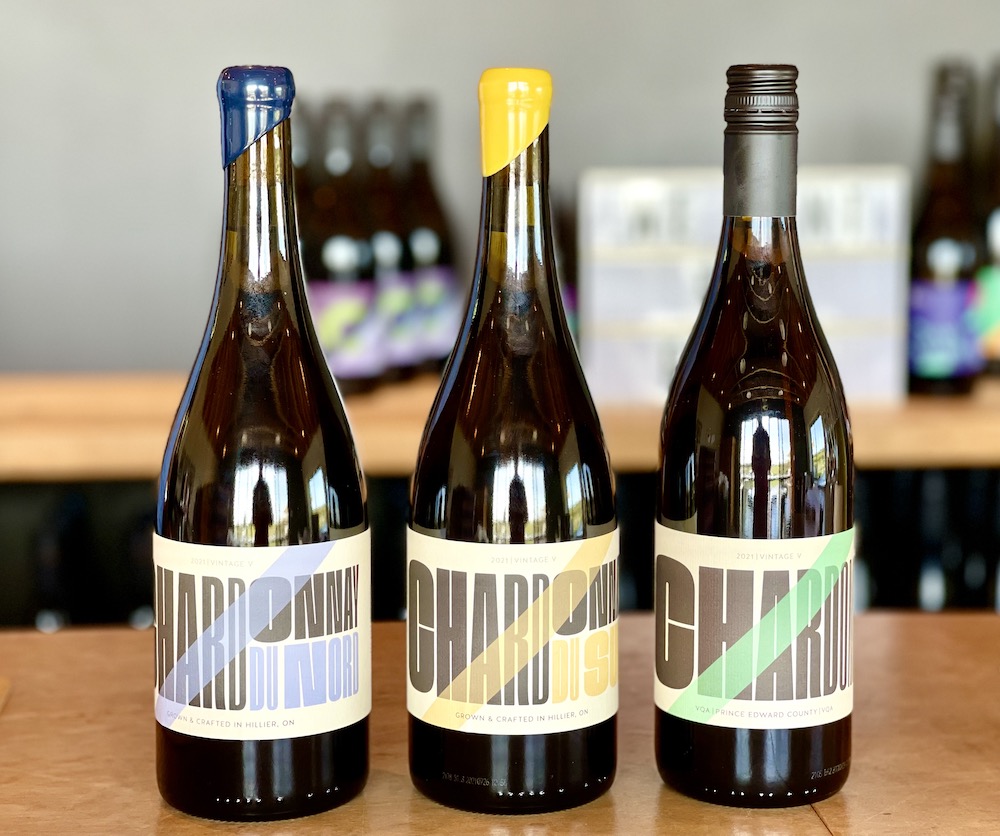
We’re greeted in the cosy tasting room at Trail by operations manager Alex Sproll who, along with Brisbois, offered up a couple of new releases and sent us home with a trio of classic Chardonnays, where I believe the estate excels, to taste at our leisure. Here’s what I liked:
Note: You can buy these wines at the winery or online here.
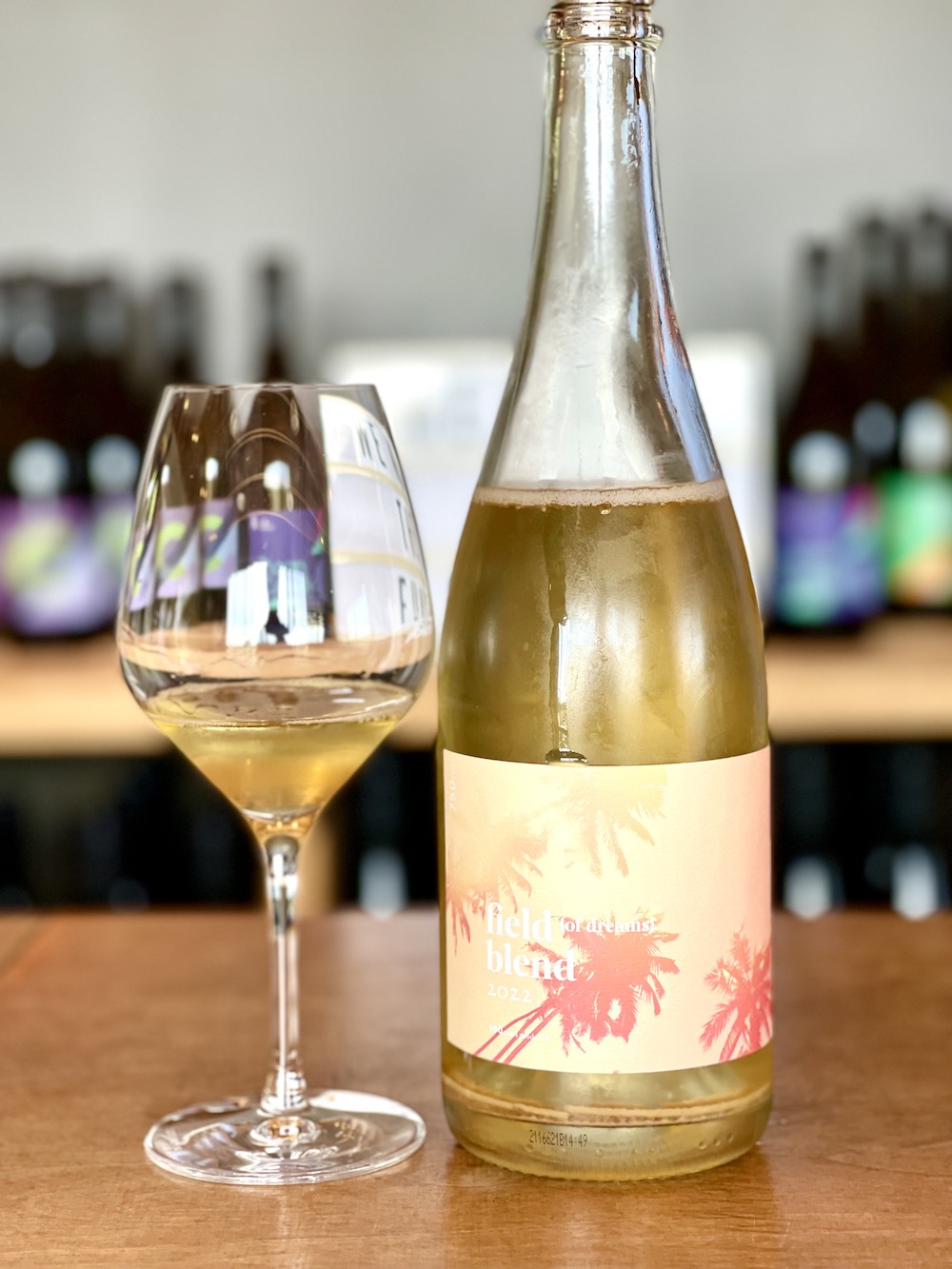
Trail Estate Field (of Dreams) Blend 2022 ($45, 89 points) — Only Brisbois could dream up this wine. It’s a 40% mix of organic, estate Geisenheim and Gewurztraminer with 60% County sourced Chardonnay. The Geisenheim and Gewurztraminer were picked at 15.9 brix, hand-destemmed and fermented with light punchdowns for 10 days before pressing. It was blended with foot-stomped Chardonnay picked at 19.6 brix with about two weeks of total skin contact. It was fermented to dryness and bottled with Riesling juice added for an aim of 3 bar pressure for the bubbles. Hard to fathom what goes through Brisbois’s over-active mind when creating up a wine like this, but somehow it works! It’s fresh and lively on the nose with a soft bubble in the glass and loaded with grapefruit, citrus zest, peach skin, ginger spice, and a bit of an unsweetened tropical feel. It’s tingly dry with a subtle bubble in the glass and elevated tartness in the puckering citrus fruits, pear skin, green apple, and fresh-squeezed grapefruit juice. It’s super dry and refreshing as you reach for a second glass. Did we mention that it’s 100% wild fermented with zero filtering and zero sulphur added?
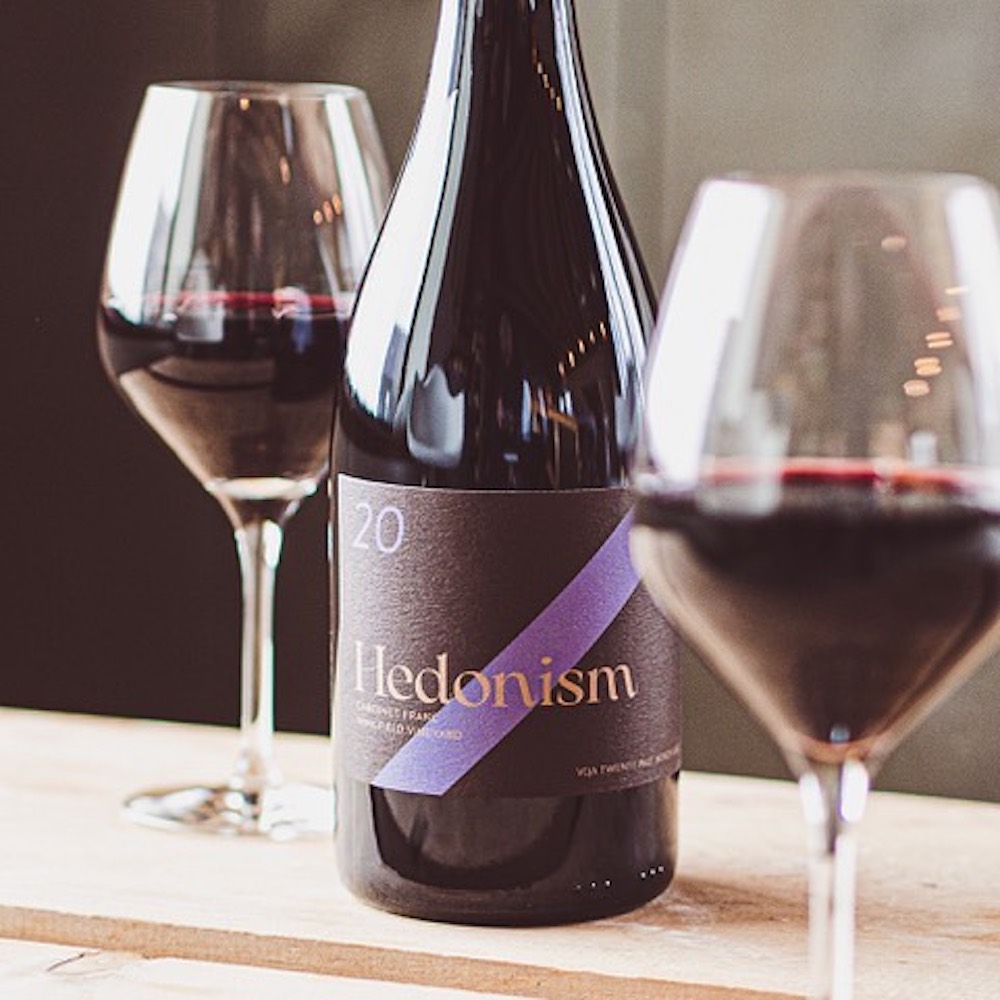
Trail Hedonism Cabernet France 2020, Niagara ($60, 92 points) — This is an outlier from the usually fresher, more delicate wines produced by Brisbois, but the fruit from the Wismer Wingfield Vineyard on the Twenty Mile Bench in the warm vintage was too hard to resist. The destemmed fruit was wild fermented prior to pressing and put to barrel — 30% new, 70% neutral and 70% French, 30% Hungarian — to age for 19 months. Minimal sulphur was added after 17 months in oak. Wow, a big, bold, sassy nose of saturated cherries, almost kirsch-like, with thick black currants, anise, black raspberries, subtle herbs, leather, toasted vanilla spices and just a pinch of pepper. There is a wall of fine tannins to deal with on the palate, which will resolve with time in the cellar, but underneath there is a ripe and dense core of red berries, cassis, and black currants to go with toasted vanilla spice and a long, rather lifted, finish. Can cellar 7+ years and be richly rewarded.
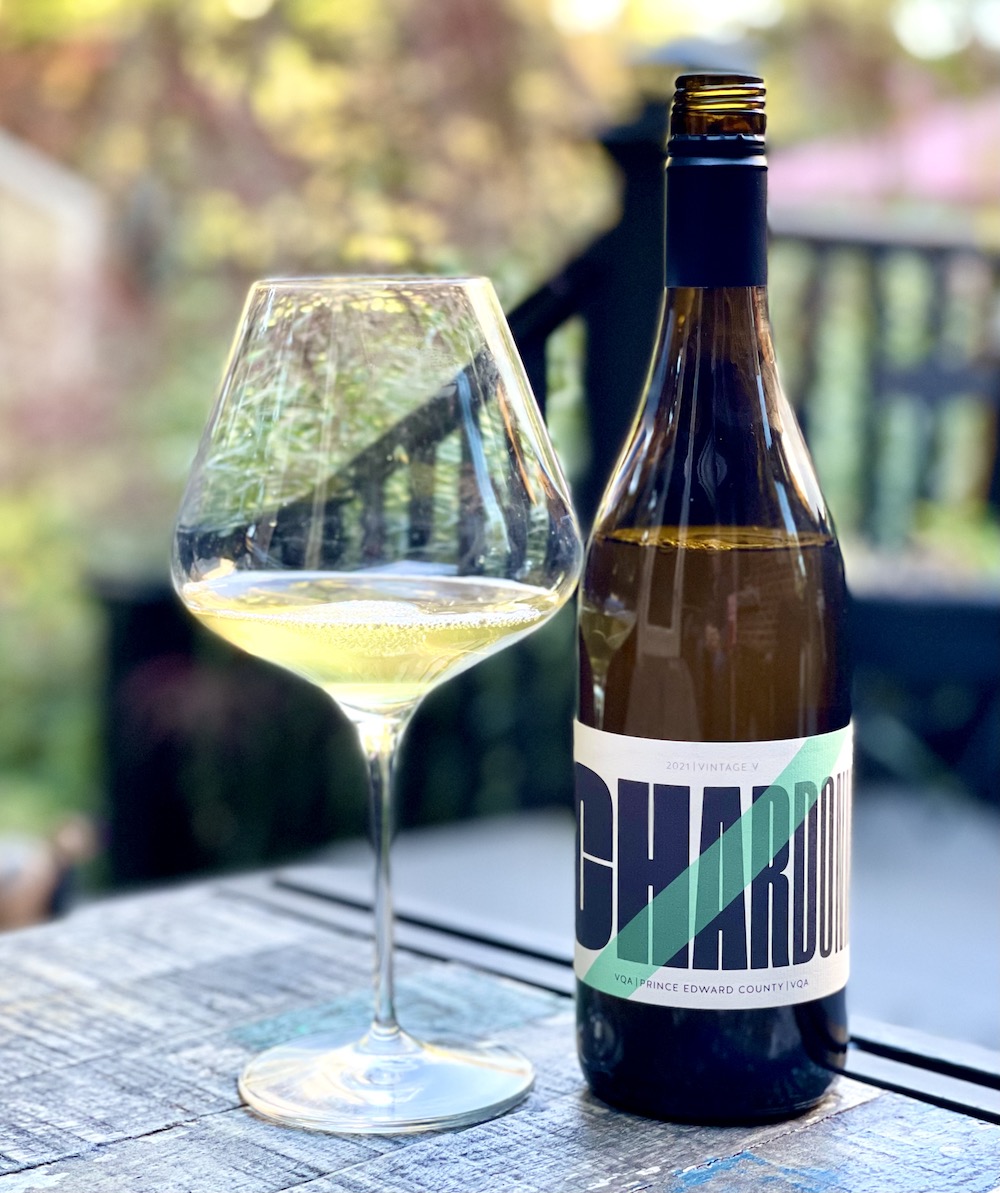
Trail Estate County Chardonnay V5 2021 ($50, winery or online, 92 points) — While Brisbois is ingenious with the wilder side of winemaking that pushes the boundaries of natural and low intervention expressions of nouveau wine styles, her classic County Chardonnays are even more impressive. The trio of Chardonnays reviewed here, with eye-popping new labels, are a perfect example of terroir-driven wines all with their own personalities from the estate’s vineyard. The estate Chardonnay is hand-picked and sorted in field from the Trail Estate Vineyard. The North and South blocks were kept separate and vinified separately and blended prior to bottling. The grapes were pressed whole cluster and were put straight to barrel. They were fermented and aged in 500 L French oak barrels, racked out of barrel, and bottled after 10 months aging and bottled unfined and unfiltered with minimal sulphur levels. There are lovely notes of lemon and saline to start on the nose, then savoury/stony minerality, pear, yellow apples, and flecks of spice, never overpowering. It’s quite delicate on the palate with flinty/saline/salty notes, bergamot, quince fruit and nervy tension on the back end all culminating in a fresh, lifted, and finessed finish.
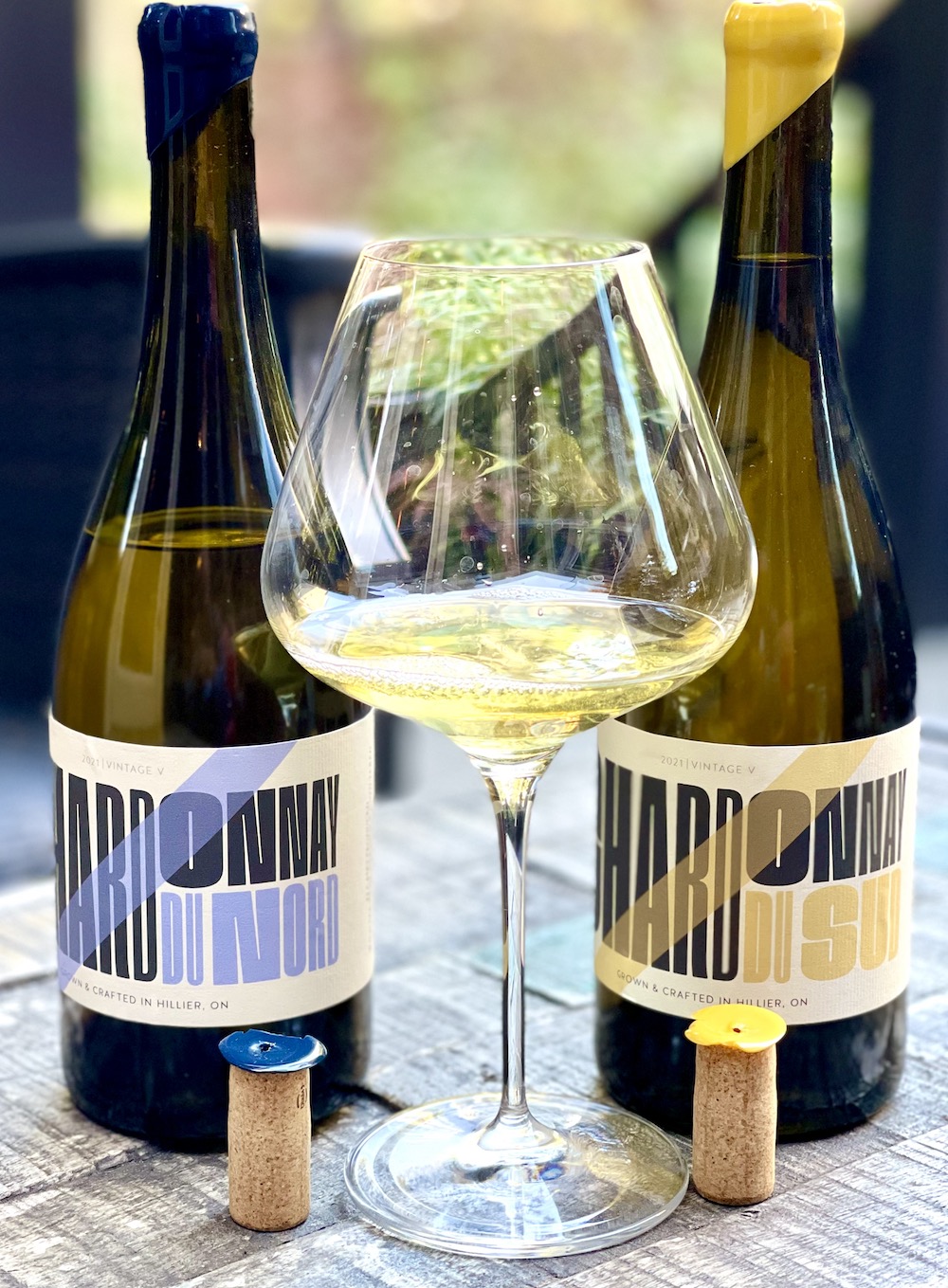
Trail Estate County Chardonnay du Nord 2021 ($65, winery or online, 94 points) — Made essentially as above, this estate Chard is sourced from the North block of the vineyard (nearest the winery). It’s a dry, shallow site and a challenging place for vines to establish themselves, but the Chardonnay has found success in planting its roots, says Brisbois. It shows a light golden colour in the glass, and it needs a bit of swirling to fully open up, but once it does there is elegance personified with floral notes and pear preserves, yellow apples, flinty/chalky notes and lifted woodsy spices. On the palate it has a creamy smooth texture and persistent rich apple/pear notes, citrus zest, a chalky vein of minerality and brisk acidity leading to a long, finessed finish. The essence of The County right here.
Trail Estate County Chardonnay du Sud 2021 ($65, 93 points) — The South block runs along the Millennium Trail, a block that is impacted by slight shade from the nearby tree line — taking a little longer in the morning to warm up. The soils change from the top of the block, which is sandier, to the bottom which is incredibly rocky. It’s a bit more subtle on the nose with a mineral edge followed by lemon, yellow apple, some pear/quince, and elegant spice notes. It’s denser and more concentrated on the palate with a creamy texture and mouth-filling lemon custard, pear, subtle savoury notes, salinity, light toasty spices and a finish that is long and lifted.
Who doesn’t love cider?
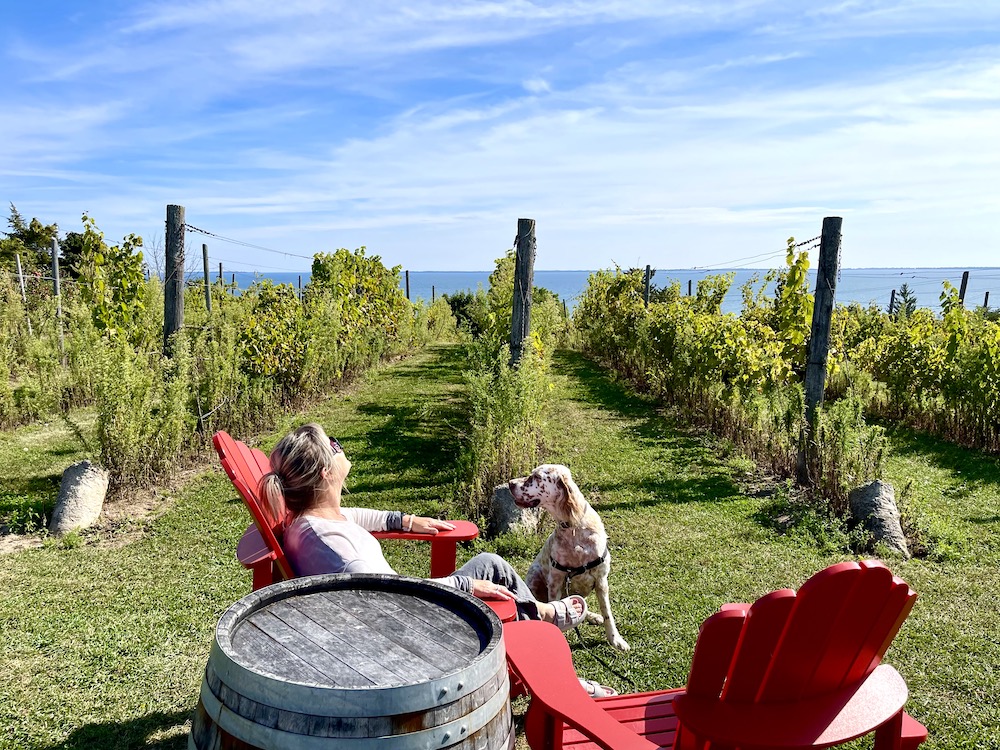
We saved the afternoon of Day 3 of our fall County jaunt to visit a dear friend at the County Cider Company in the beautiful lakeside hamlet of Waupoos.
What Donald Ziraldo and Karl Kaiser are to the Ontario Wine Industry, Grant Howes (below), the founder of County Cider Company, is to Ontario cider. We have Ziraldo and Kaiser to thank for kick-starting the modern-day wine revolution with the opening of Inniskillin Wines in Niagara and we have Howes, who passed away suddenly in January of 2017, affectionately known as the grandfather of Ontario cider, the one who began the modern cider revolution.

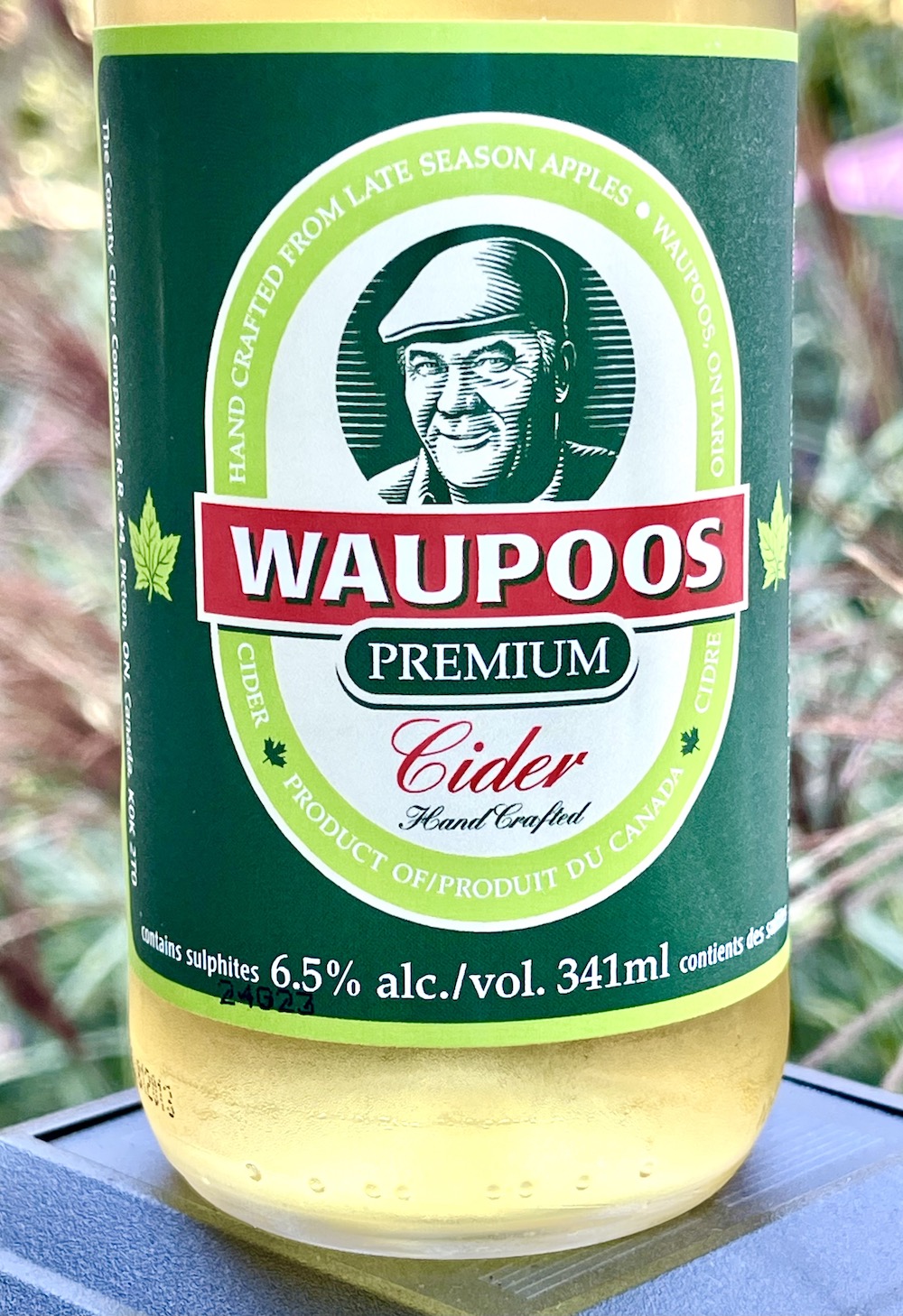
His death at 60 years old was very sad for me and all who knew him. I went to high school with Howes in Etobicoke, we were good friends and both of us ended up in the drinks industry in Ontario. We shared many good times with our old buddies whether it was on the golf course, attending music concerts or reunions.
It is sincerely gratifying for me to visit the cidery as it is now with his partner, the love of his life, Jenifer Dean (below), not only continuing the legacy of the County Cider Company and Howe’s dream but making it better and better with each passing year. Her passion for the business has never waned and it shows in the innovations Dean and her team have implemented to keep County Cider a vital business and important destination for visitors to The County.
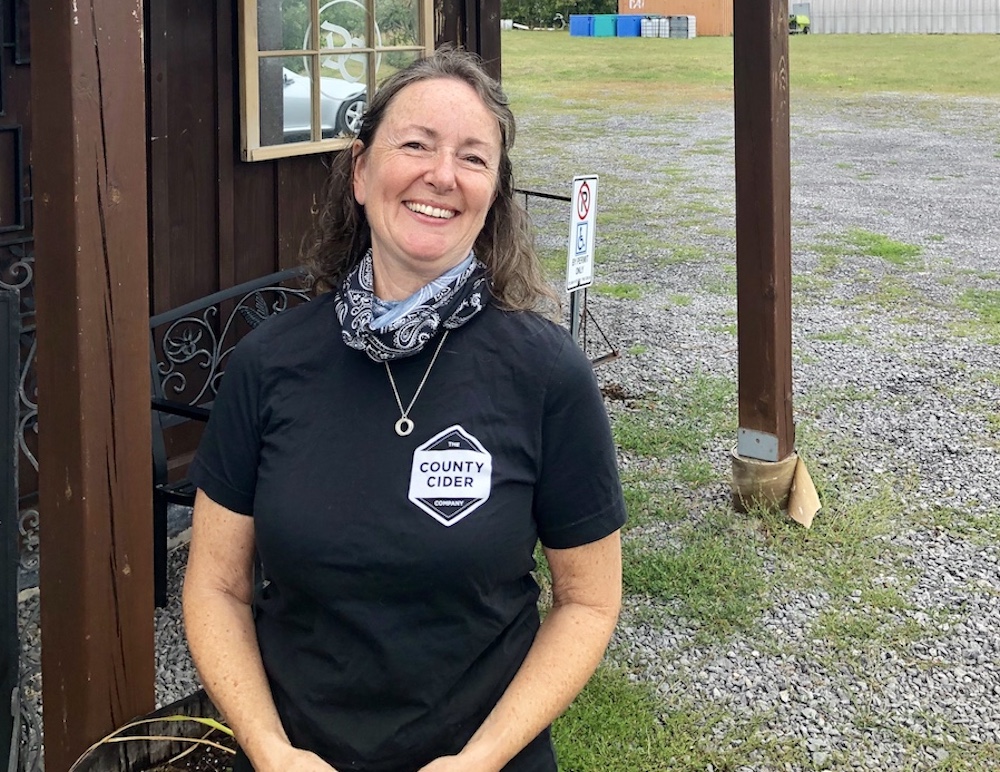
With spectacular views looking down from pizza patio, County Cider is jam-packed during the summer season with visitors clamouring for myriad craft ciders Dean and cidermaker Dannielle Davidson have introduced to the portfolio that seem to pair so beautifully with the oven-fired pizzas so coveted by regular visitors. Inside the tasting room, guests can sample ciders or purchase them from a vast array of bottles and cans.
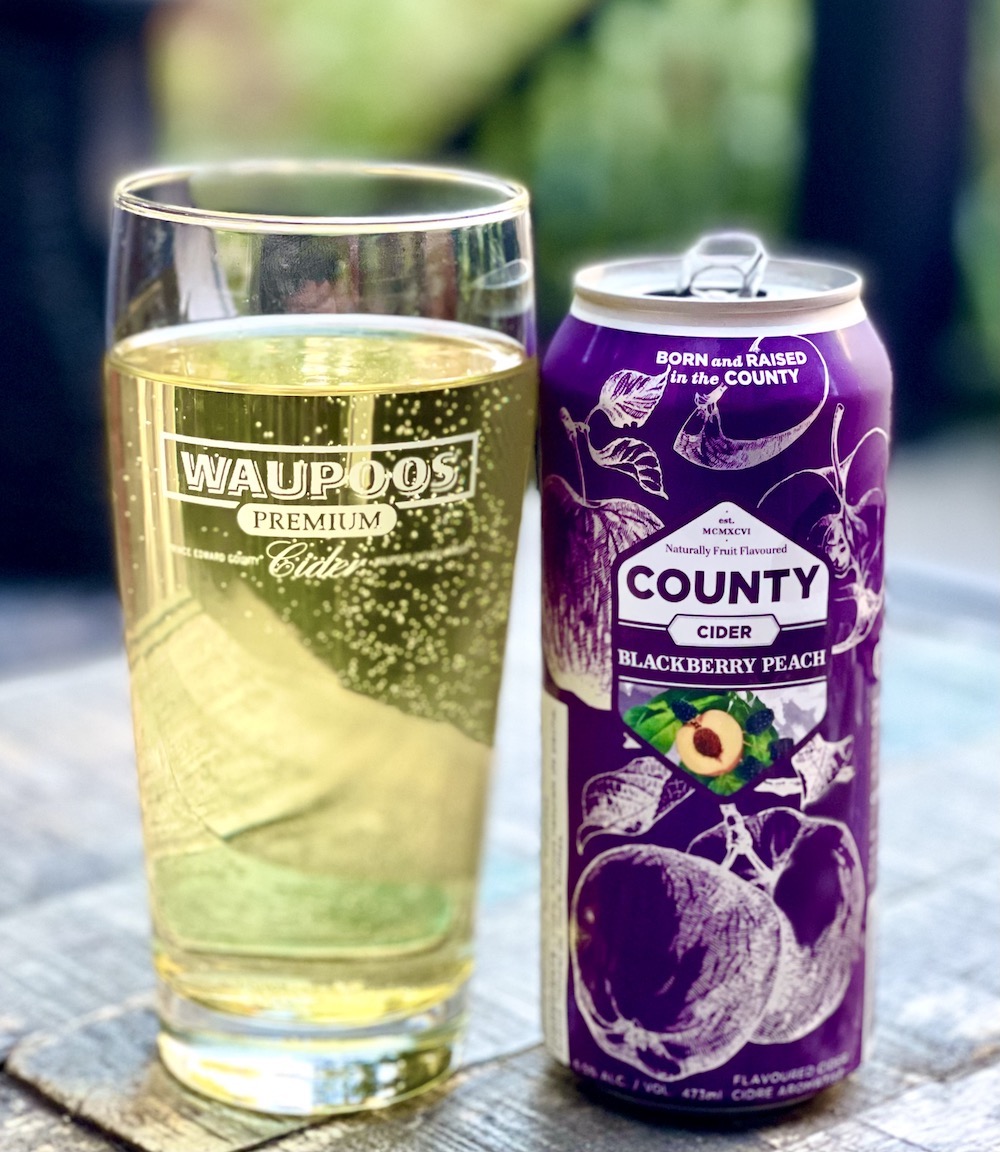
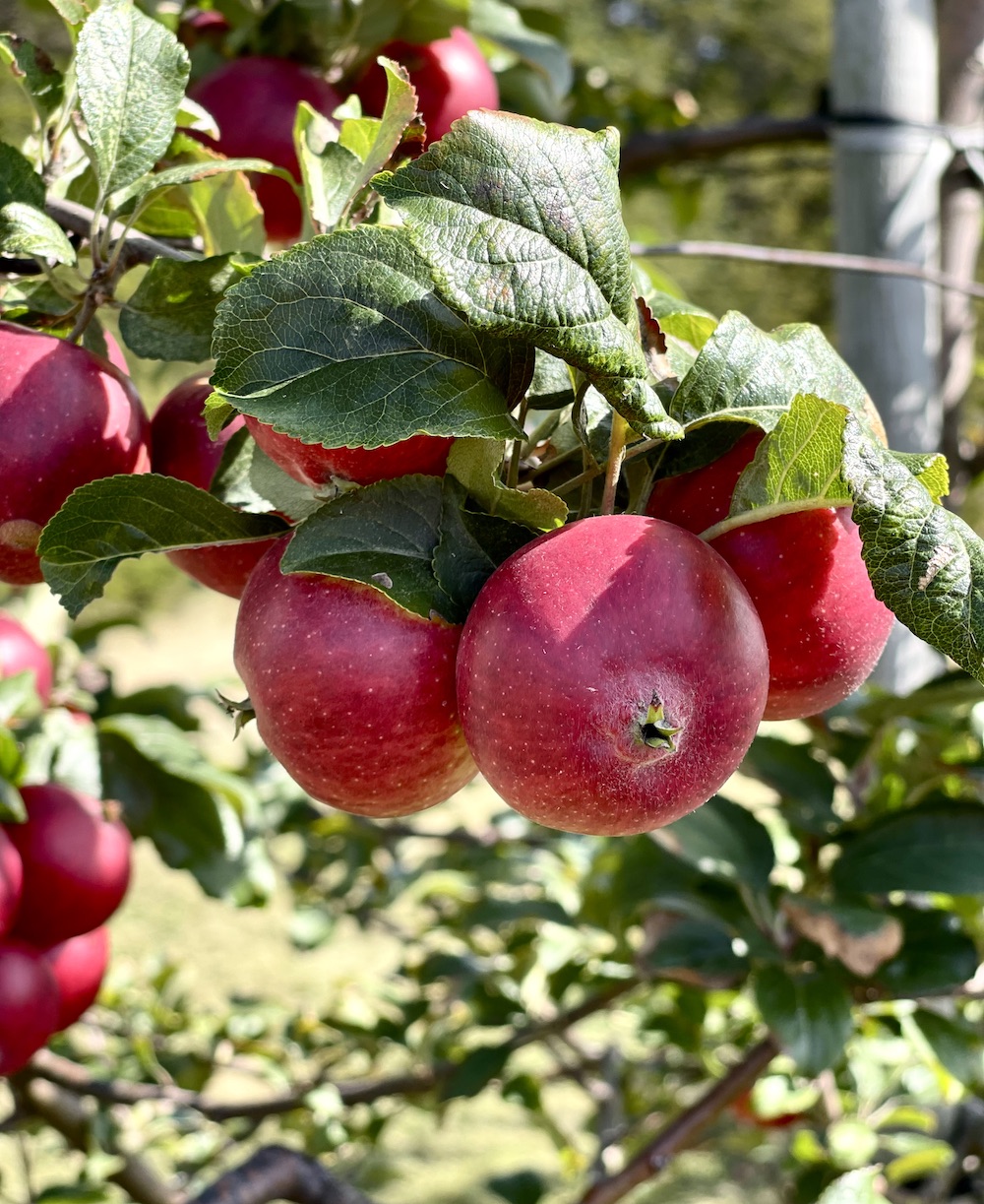
During our visit with Dean, we tasted the new Blackberry Peach Cider, a refreshing and flavourful concoction that both Maureen (my wife) and I absolutely loved. We loaded up on that, plus the new County Cider Lime, perfect for cider mojitos or drinking on its own. I, of course, chose the flagship Waupoos Premium Cider, probably the best every day cider made in Ontario, and my other favourite, A Tortured Path, a funkier, perfectly dry, and nuanced cider.
We chatted with Dean while enjoying our ciders from the tap and got caught up, just as friends do. It was a gorgeous fall afternoon and so rewarding to see such a beautiful person as Dean is, absolutely killing it with the business a dear friend started and one she has now taken to new heights.
Speed tasting at Lighthall Vineyards
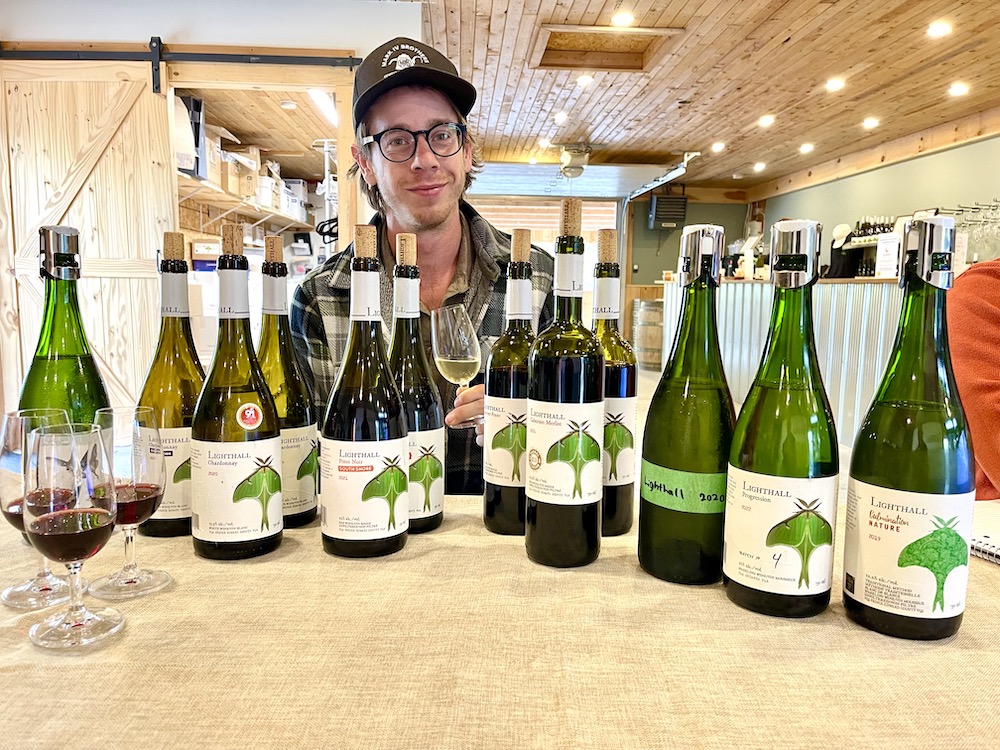
The final day in Prince Edward County took me on a solo adventure to an early morning appointment at Lighthall Vineyards before we hit the highway back to Niagara. An hour to taste one of the most complete portfolios in The County? It was a daunting task, but I was up to the challenge.
There have been big changes at Lighthall Vineyards since I last visited. First and foremost, Glenn Symons, the founder, winemaker, and cheesemaker at the estate, moved to Meteghan, Nova Scotia, over a year ago. His assistant winemaker, Chris Thompson (above), who has worked for six vintages at Lighthall, is now the winemaker and is working on his second vintage as the head winemaker.
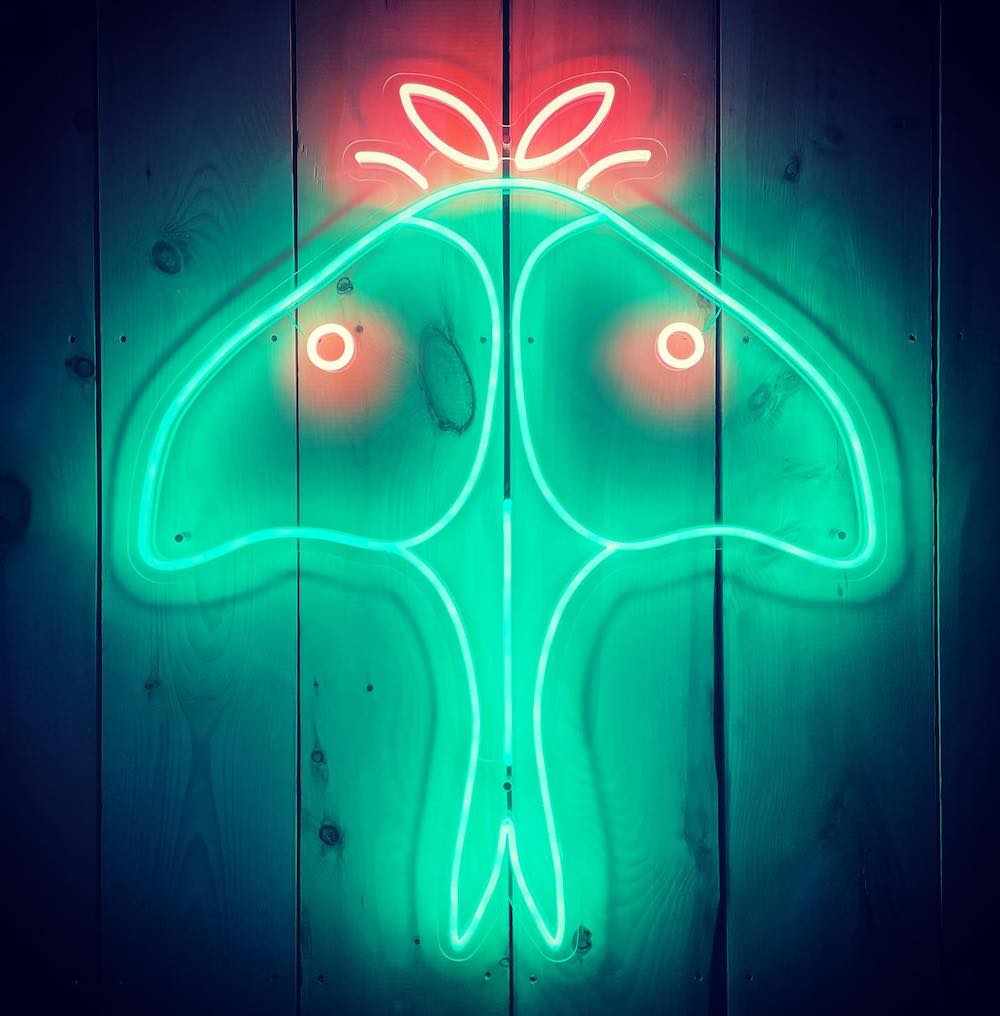
I do not know the details of why Symons left The County, but I’m told by the estate’s general manager, William Haddleton, that Symons still has an interest in Lighthall, but is not involved with the wine, cheese production or day-to-day operations any longer. I have known Haddleton since my days as the Toronto Sun wine writer, going back to the mid-2000s. He has had a successful career working for various wine agencies in Toronto before coming to Lighthall as the GM. I was happy he reached to me for a tasting of Lighthall’s latest and upcoming vintages.
Symons was (is?) a brilliant winemaker, producing many head-turning vintages since the winery opened in 2018, so it was a little strange to taste without him there.
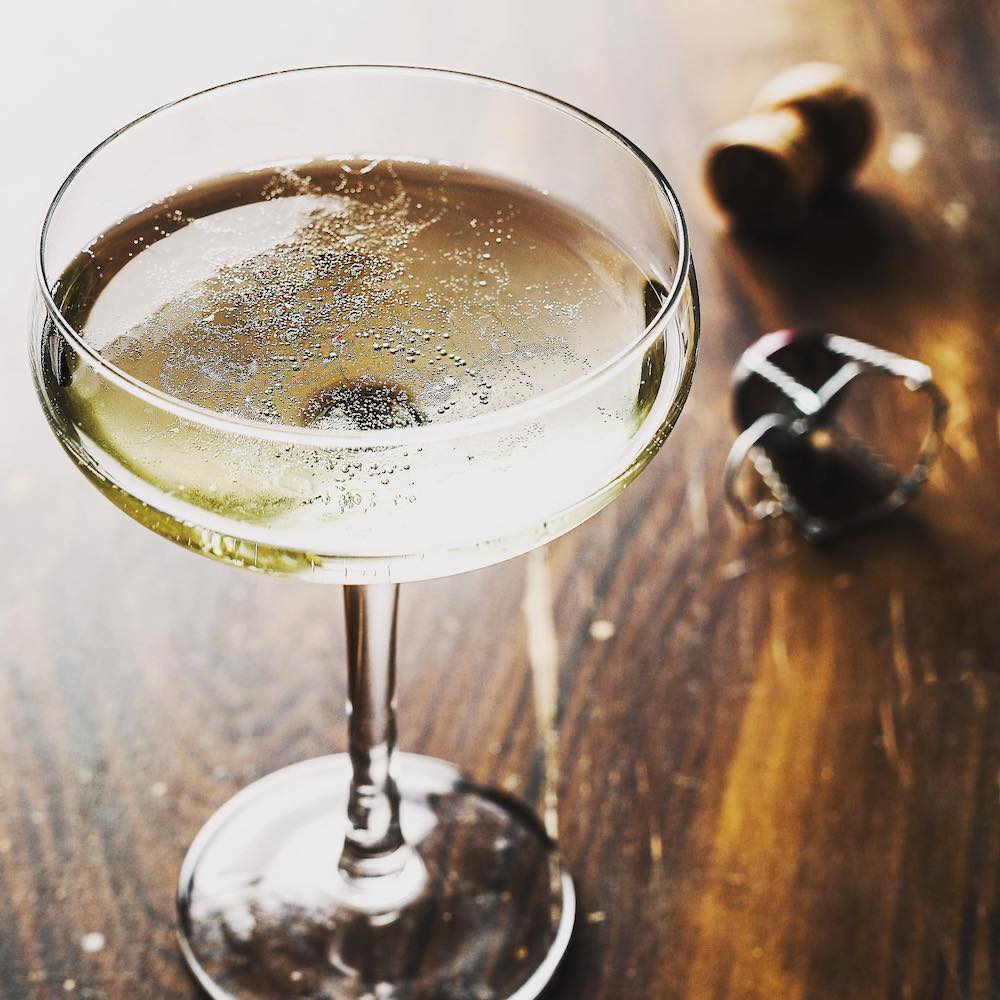
I was greeted on this day by Thompson and Haddleton, who had set up a robust lineup of what Lighthall does best. I was surprised by the growing portfolio that is now being fuelled by additional purchased vineyards that include, the home vineyard with 99 acres, 21 planted to vines, the Marblerock Vineyard with 51 acres, 11.5 acres planted to grapes, and the South Bay Vineyard with 189 acres, 27 acres under vine. Grapes planted in The County include Chardonnay, Pinot Gris, Gruner Veltliner, Riesling, Vidal, Pinot Noir, Merlot and Cabernet Franc.
Aside from wine, Lighthall is also one of the very few wineries in Canada that produces its own sheep’s milk cheese on site. The milk is sourced from a single herd of well-cared for ewes. Like the wine, the cheeses are a reflection the natural terroir of the farm.
The Lighthall farm and winery is located just west of the southern entrance to Sandbanks Provincial Park with vineyards adjacent to the winery and in South Bay.
Topsoils range from reddish-brown clay loam to sandy loam and overlay limestone bedrock embedded with shale fragments. The stony surface and numerous rock and shale fragments within the soils allow water to drain into the limestone, which ensures good drainage of winter-melt and substantial root penetration for mature vines. This rocky soil also allows good heat conduction and retention and encourages early warming in the spring.
Here’s what I liked from the tasting:
The bubbles
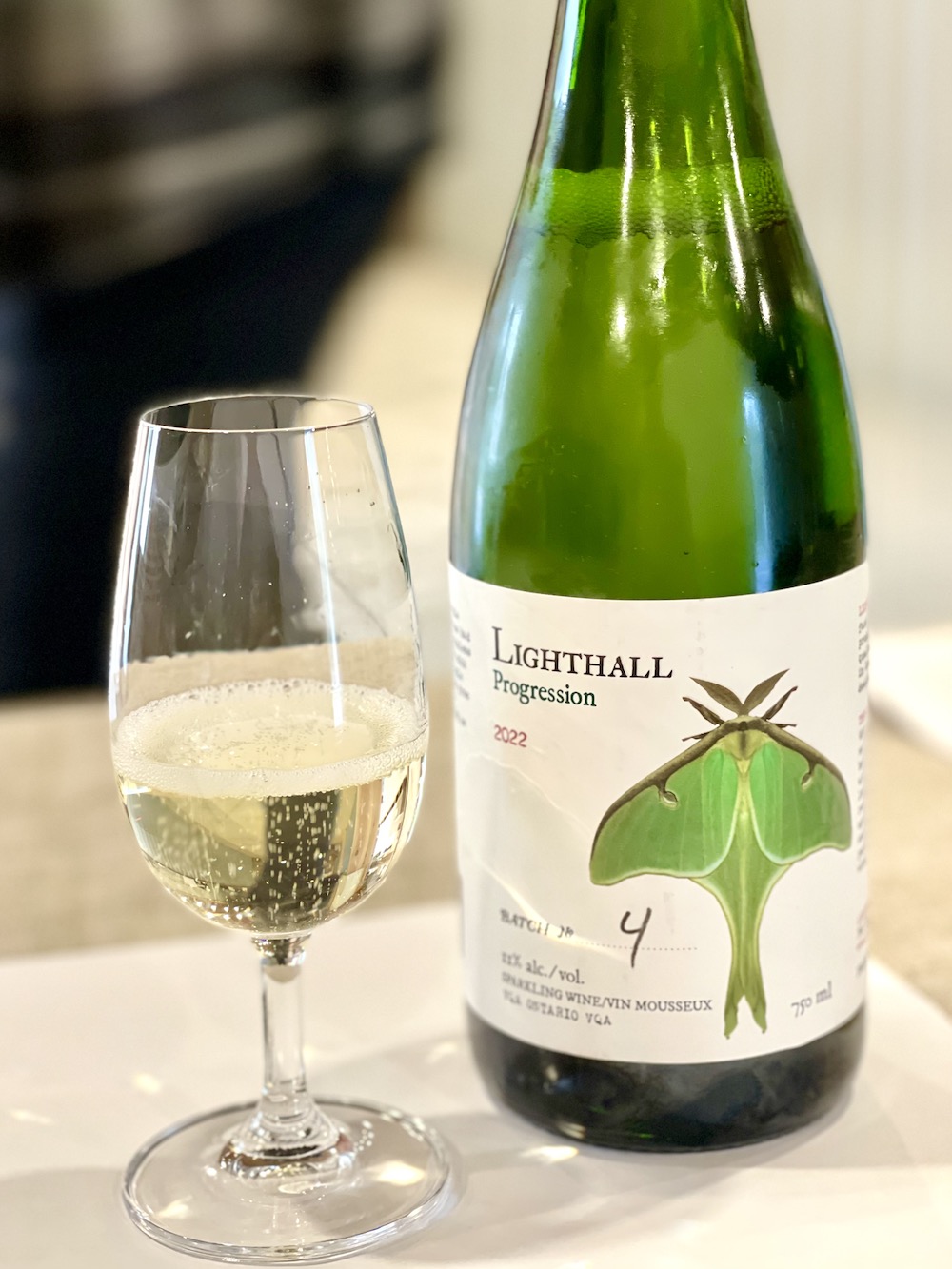
Lighthall Vineyards Progression 2022 ($25, 89 points) — Made in the charmat method, this 100% Vidal is fresh and floral on the nose with citrus, melon, green apple, and a subtle effervescence. It’s bright and lively on the palate with tart citrus, peachy/melon notes, and tiny bubbles offering lift on the finish. Made from 55% County Vidal and the rest sourced from Niagara to keep up with the volume.
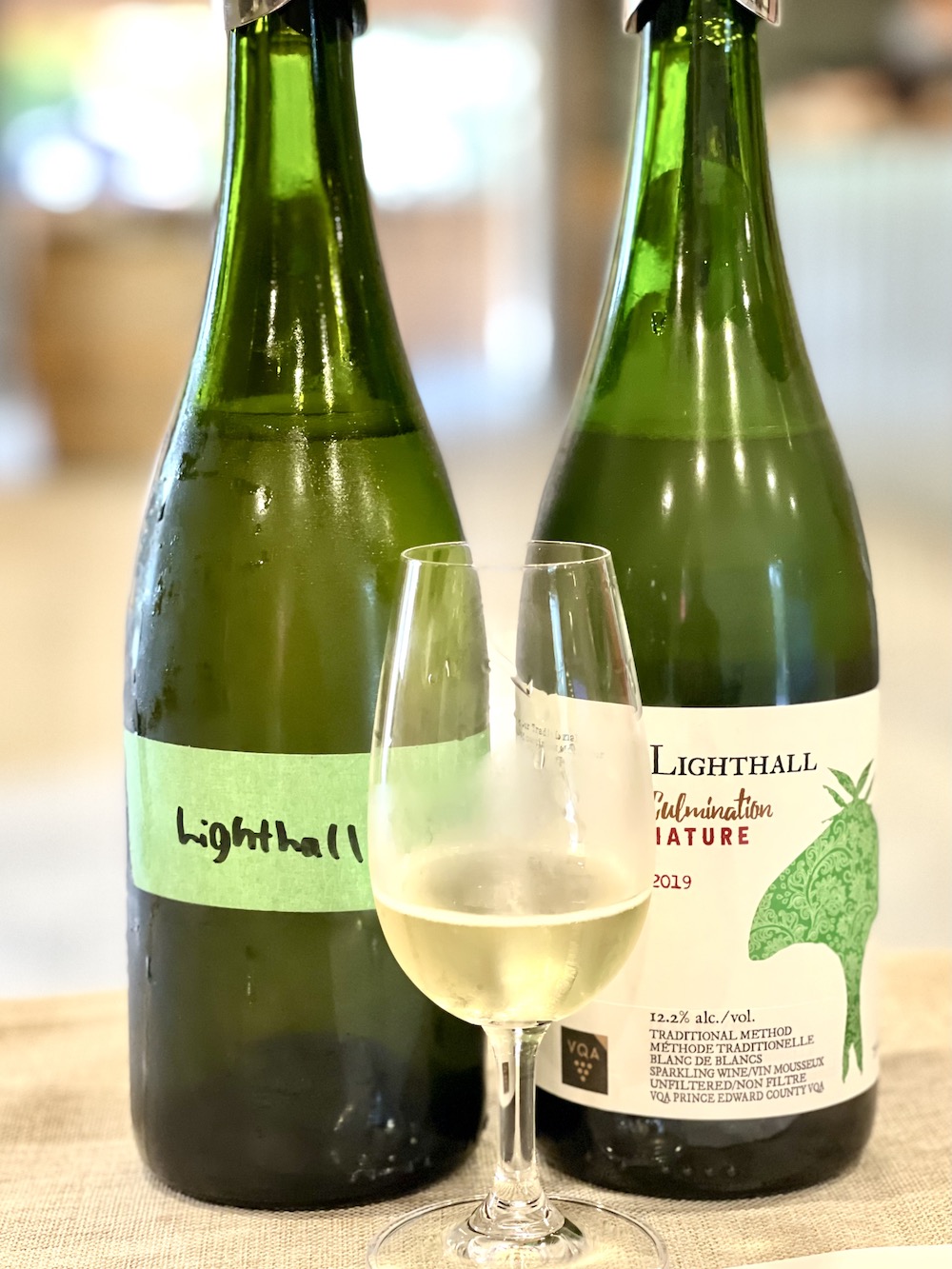
Lighthall Vineyards Culmination 2019 ($40, almost gone, 92 points) — This is a traditionally made blanc de blanc (100% County Chardonnay) that spent 24 months on the lees and finished with zero dosage. It has an elegant bead on the palate with an enticing nose of toasty brioche, bright citrus, pear, pretty floral notes and flinty minerality. It’s fresh and lively on the palate with persistent bubbles, toasty/leesy notes, saline/flint accents, pear, quince, and racy acidity keeping it fresh and lifted through the finish. The next vintage, the 2020 (released in six weeks or so), shows a bit more energetic bubbles on a rounded palate with a riper style. The finish is nicely finessed.
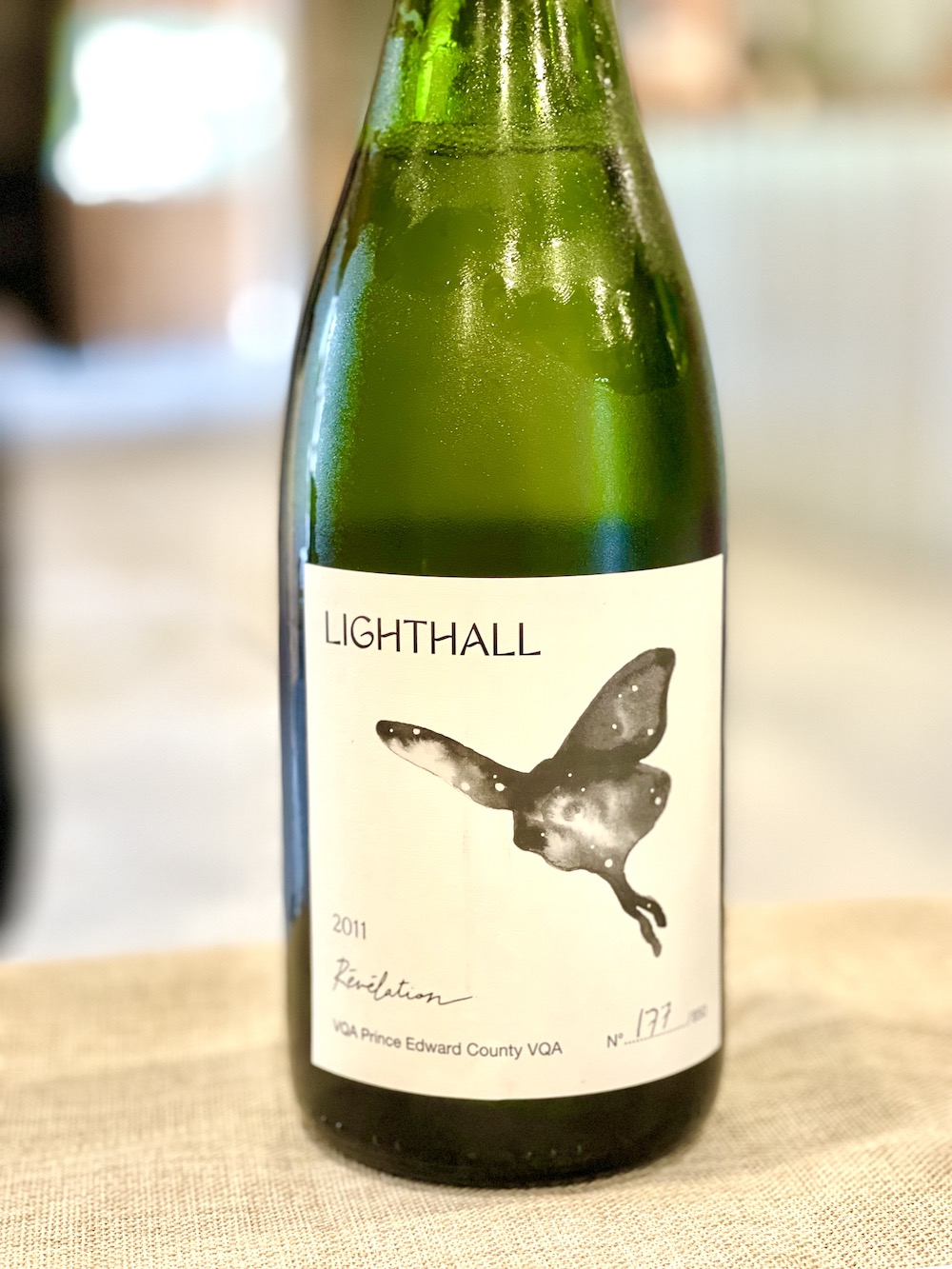
Lighthall Vineyards Revelation 2011 ($100, 94 points) — “This is the lord of the sparklings,” Haddleton commented. What a treat to see a 100% County Chardonnay sparkling wine that spent 10 years sur latte with zero dosage. It’s a limited edition blanc de blanc offered in numbered bottles. Such a soulful nose of flint, lemon curd, toasty brioche, complex autolytic notes, pear preserves, yellow apple, and an elegant bead in the glass. Such brightness and flair on the textured palate for a sparkler that spent a decade resting on its lees. It displays flinty minerality, a delicate bubble, an array of citrus and pear, an almost smoky note to go with pie crust and nutty accents with bright acidity keeping this fresh and youthful through the finish. Beautiful bubbles!
The Chardonnays
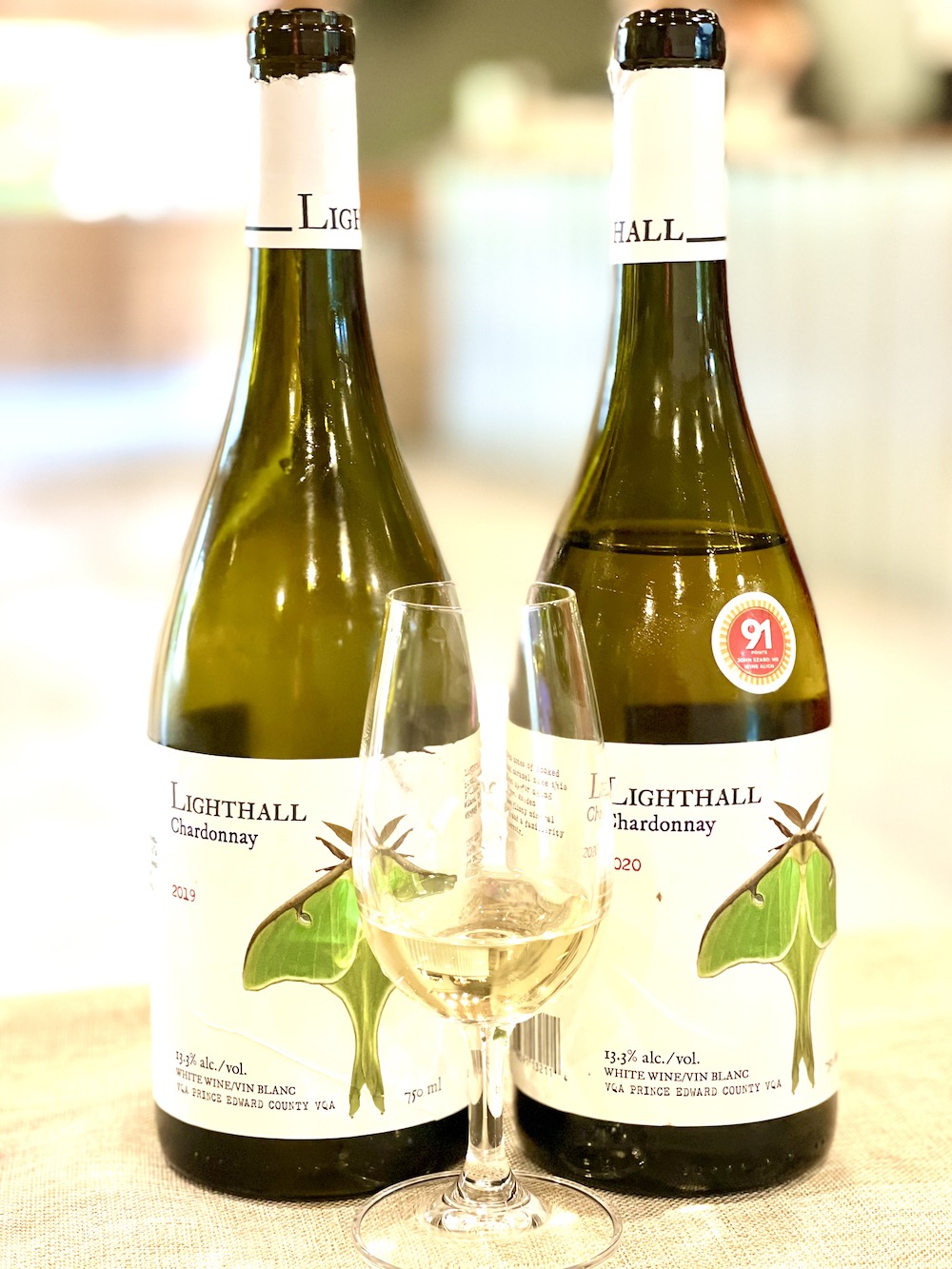
Lighthall Vineyards Foundation Chardonnay 2021 ($36, 91 points) — This is the first edition of Lighthall’s concrete aged Chardonnay with an interesting nose of creamy pear, crushed oyster shells and salinity, fresh-squeezed lemon notes and yellow apple. The concrete aging really shows up in the lovely texture on the palate that caresses the pear, lemon, apple notes with flinty/stony minerality and a brisk, lively finish.
Lighthall Vineyards Chardonnay 2019 and 2020 ($36, 91 points) — This County Chardonnay was aged in one-third French oak and the rest in stainless steel. It starts on the nose with ripe pear, racy salinity and flint, yellow apple, lemon curd and perfumed spice notes. There’s an interesting and subtle reductive note on the palate with a creamy texture that delivers ripe orchard fruits, stony minerality, citrus zest and a lifted finish. The 2020 version shows more richness and concentration from the ripe pear and apple with elegant oak spices on the nose. It’s full and rich on the palate with plenty of freshening acidity on the finish.
The Pinot Noirs
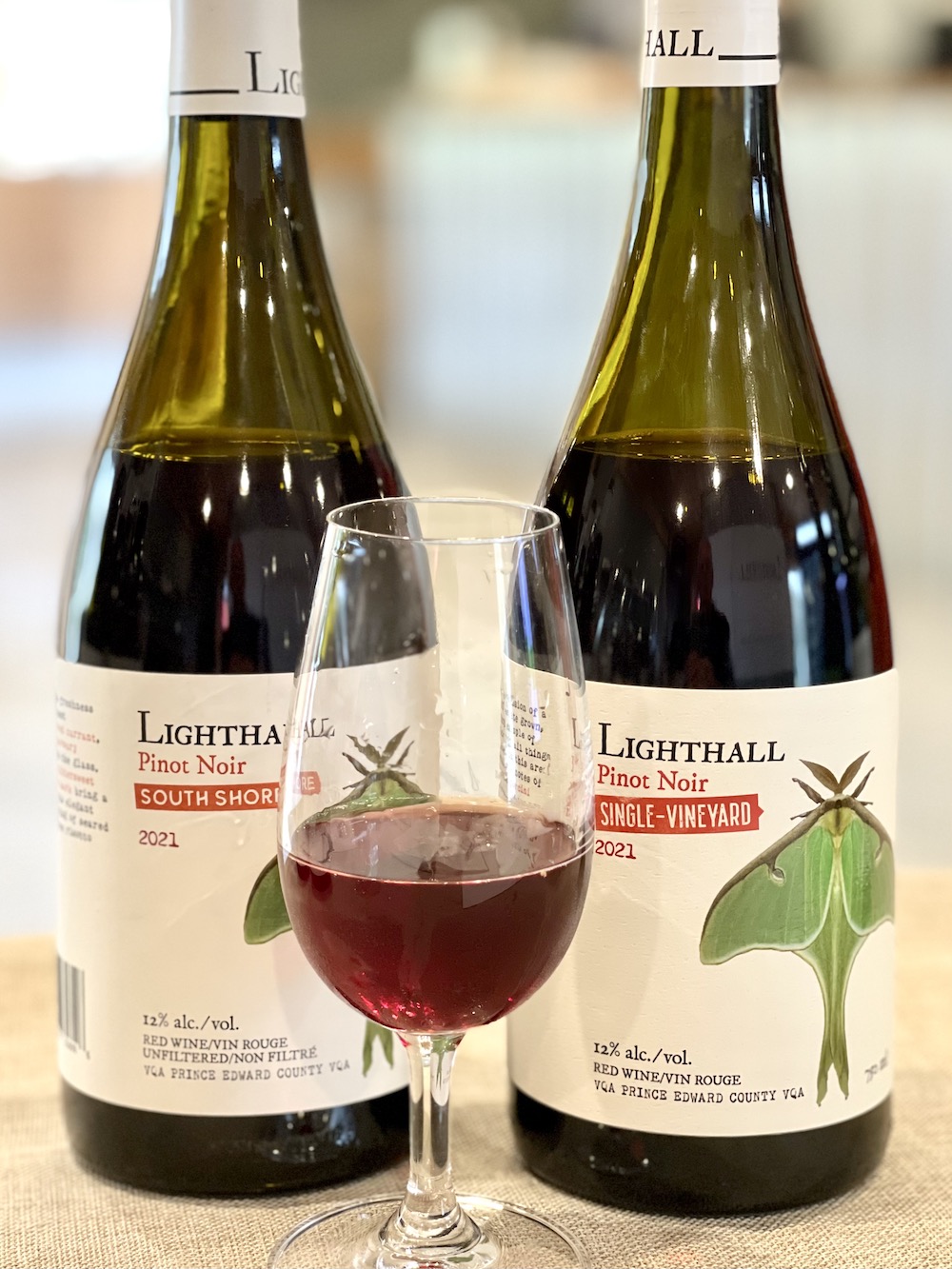
Lighthall Vineyards South Shore Pinot Noir 2021 ($37, 92 points) — This blend of South Bay Vineyard and home vineyard Pinot was aged in concrete then moved to French oak puncheons (20% new) for 12 months. It’s light in colour in the glass but big on aromas of spicy red berries, cassis, classic iron/bloody minerality and savoury/earthy notes. It’s complex and layered on the palate with brambly black raspberries, dark cherries, beet root, anise, cedar, and elegant oak spices. The finish is long and finessed.
Lighthall Vineyards Pinot Noir 2021 ($50, 93 points) — This is a single-vineyard expression of Lighthall Pinot Noir from the home vineyard. It shows profound savoury floral/perfume notes on the nose with Christmas cake spice, dense dark cherries, earthy/underbrush notes, and red currants. It’s quite concentrated and rich on the palate with ripe and savoury red berries, umami notes, pulpy pomegranate, anise, cedar and elegantly spiced with a lifted, long finish. Very fine County-centric Pinot Noir. Can cellar 4+ years.
The red blend
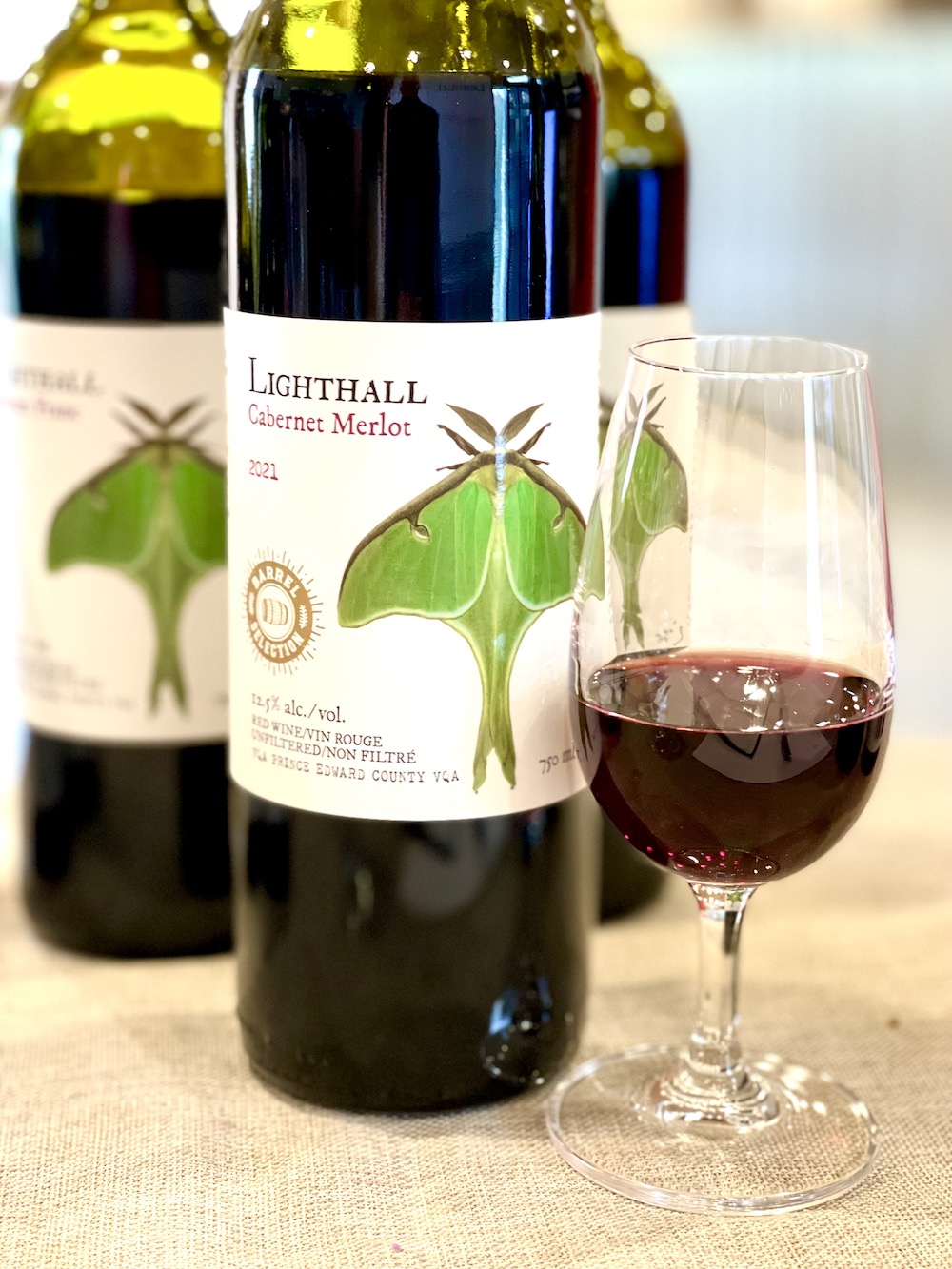
Lighthall Vineyards Cabernet Merlot 2021 ($50, 91 points) — It’s rare we see a Cabernet/Merlot blend from The County, but Lighthall has done a nice job on this one from estate-grown fruit in a warm vintage. It shows ripe dark cherries, blackberries and anise with some minty herbaceous notes and spice. It shows a riper, richer profile on the palate with a mélange of red and dark berries, black licorice, currants, and elegant spice notes with a finessed finish. Can age 5+ years.


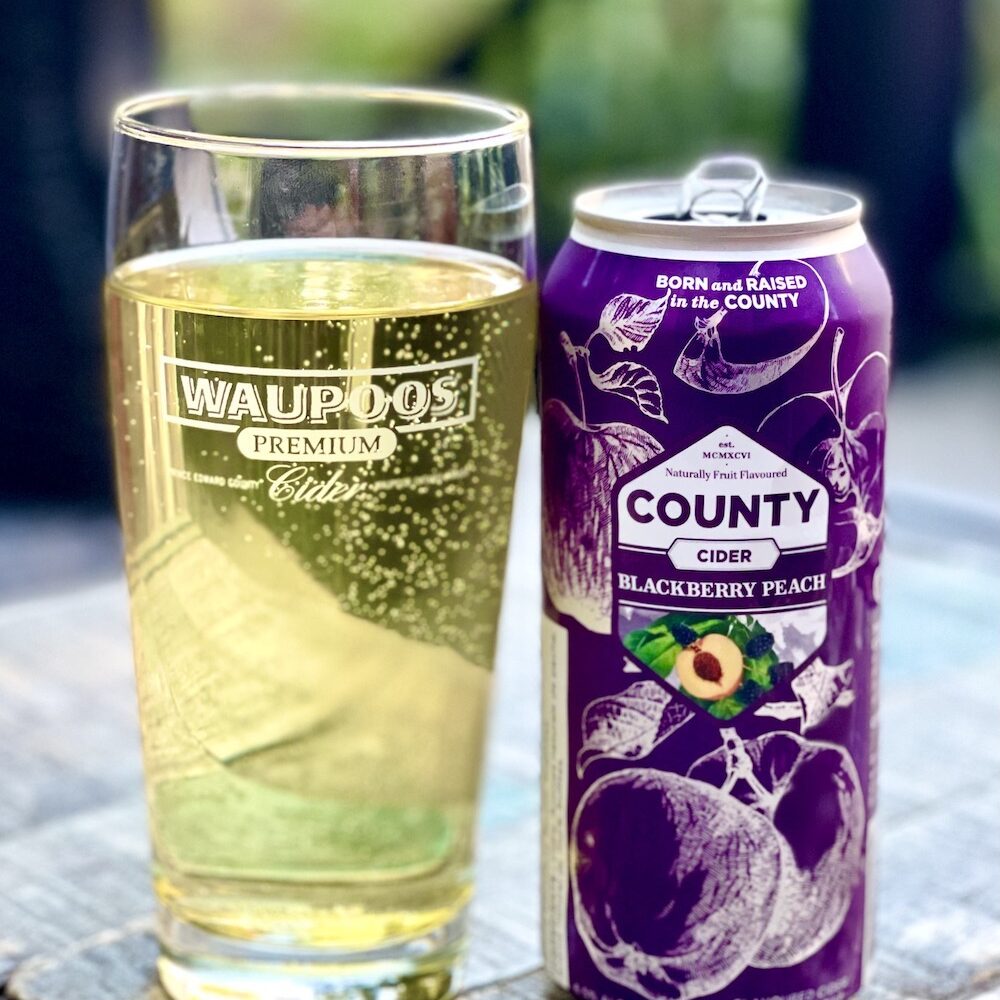




Comment here